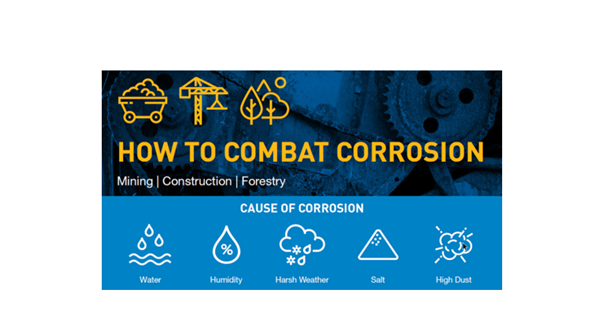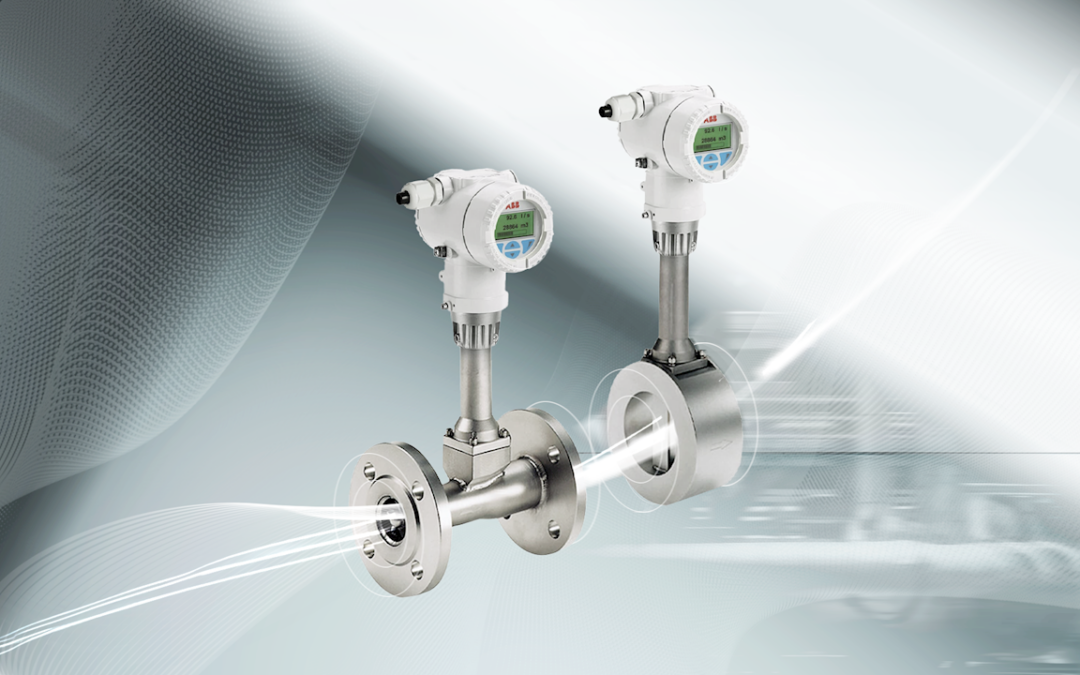Corrosion management and prevention is a critical factor in many industrial settings. Left untreated, corrosion can put infrastructure, safety and business performance at risk – with potentially devastating consequences. It’s also bad for the bottom line; a NACE International study estimates the annual cost of corrosion to be $2.5 trillion.
On the upside, design engineers have more tools available to them than ever before. Improved insights into types and causes of corrosion, advances in materials and best-practice guidance all help engineering professionals to prevent and reduce metallic degradation.
The information in this post summarises a recent Parker white paper on combating corrosion.
Primary types of corrosion
This infographic shows key corrosion types, causes and best practices for mining, construction and forestry. Corrosion management is key to industrial productivity, safety and profitability.
Six types of corrosion are commonly found in industrial applications today:
- Galvanic corrosion is where two electrochemical different materials (e.g. steel and brass) come into contact in a corrosive environment, causing the least-resistant material to corrode.
- Pitting corrosion occurs when deep, narrow holes penetrate inwards quickly, but the rest of the surface metal remains intact. This usually applies to self-passivating materials like stainless steel or aluminium alloys.
- Uniform corrosion happens at a steady rate, leaving an even deposit across the surface of exposed metal.
- Crevice corrosion can be found where stagnant liquid builds up locally in small gaps, such as in pockets or corners.
- Intergranular corrosion occurs on or near to the grain structure of an alloy, causing localised attacks.
- Stress corrosion is where a material is subject to a continuous or changing tension in a corrosive environment, leading to cracks.
What causes corrosion?
The causes of corrosion are complex and vary across industries. Some examples common to specific industries are listed below:
- Corrosion in construction often occurs due to metals being exposed to outdoor elements and extreme temperatures.
- Underground mining is typified by an acidic water environment (often with chlorides and sulfates), combined with high humidity and temperature.
- Forestry corrosion often takes place in remote locations, with equipment parked on grass or soil surfaces that draw up large amounts of moisture overnight; this can corrode onboard mechanical systems and components.
Environmental conditions will also affect corrosion rates and spread. Where humidity is present, this generates moisture – causing a reaction where metals corrode much more quickly than they would in dry conditions.
One or more of the following factors will often be present in a corrosive environment:
- Humidity
- Extreme temperatures
- Surface moisture
- Airborne particles
- Salt
- Industrial lubricants
Long term corrosion prevention
NORSOK M-650 compliant 6Mo instrumentation products are undoubtedly a powerful ally in the ongoing battle against corrosion. If you are designing systems that contribute to the safety, reliability and 40-year operational life of offshore platforms, NORSOK M-650 compliant products should be your choice.

If you would like any more information on corrosion prevention contact us below.








